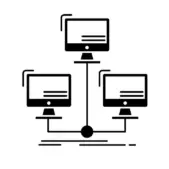In today’s competitive business landscape, providing an exceptional customer experience is crucial for building brand loyalty and driving long-term success. However, the key to customer loyalty may not lie in simply “delighting” customers but in reducing the effort required to resolve their problems and meet their needs. This article explores four key principles of implementing “effortless” customer service through UX design.
By incorporating these principles, you can reap the rewards of enhanced customer loyalty and retention. The insights provided offer valuable guidance for UX designers, customer service teams, and business leaders alike who are seeking to optimize the customer journey and drive sustainable growth.
How Effort Impacts Customer Loyalty
Exceptional customer experience is thought to be the one thing that encourages loyalty more than anything. However, a low-effort UX is, in fact, a better predictor of customer loyalty than customer satisfaction or even exceptional customer service.
Brands that offer lean, efficient UX through interactions like self-service and automatic authentication enjoy far greater customer loyalty than brands that require customers to try to solve their problems.
The bottom line is this: if a customer has to work at all for a positive outcome, your brand is nudging them towards disloyalty.

UX Design Helps Prevent Customer Disloyalty
Brands that focus on UX design to simplify support processes can eliminate friction points that might otherwise drive customers away. Common examples of this kind of friction are easy to spot:
Contacting the Company More Than Once
Suppose a customer has to call multiple times to get a problem solved. In that case, your brand’s reputation won’t survive the hit, regardless of how quickly and professionally your team solves the problem. In fact, if you can use self-service principles to make resources available that prevent customers from calling in the first place, you are winning the low-effort game.
Generic Service
Nobody likes being treated like a number. Generic services that fail to make customers feel unique and appreciated are highly detrimental to customer loyalty. Incorporating even a small degree of personalization can have tremendous results in mitigating customer churn.
Being Forced to Repeat Themselves
If your customer relationship management (CRM) system doesn’t track customer queries, they will constantly have to repeat the same information. This makes customers feel unappreciated, frustrated, and like their business is not important to you.
Incorporate the 4 Principles of Low-Effort Service
Mitigating UX friction can help improve customer outcomes across all brand touchpoints. There are four principles you need to keep in mind to implement low-effort experiences successfully:
1. Boost Self-Service Support Channels
Use effective UX design to empower your customers to solve their support problems without calling you. Give them access to their data, expose a business process online, or use a web app to automate support tickets.
2. Focus on “Next Issue Avoidance”
In many cases, solving one issue leads to another. If customers call your support team with predictable strings of sequential problems, you can improve customer loyalty by addressing the entire string from the start.
3. Reduce the Perception of Complexity
Sometimes, you can’t change the number of steps a customer has to take to solve a problem. However, there is a major difference between referring them to the user manual and giving your customers personalized step-by-step instructions.
4. Measure Quality by Individual Interactions
Metrics can be valuable but don’t always provide a complete picture. Customer service representatives who focus solely on metrics like call closure rates may resolve calls quickly but fail to address the root causes, leading to recurring issues.
Achieve Effortless Experiences for Lasting Customer Loyalty
There is more to customer loyalty than delivering “wow” experiences. Brands and their UX design teams must find ways to provide seamless customer experiences without requiring unnecessary effort from the user.
To learn more about optimizing your customer experience through UX design, get in touch with UpTop. Our team of experienced UX designers and customer experience experts can help you identify areas of friction, implement low-effort support solutions, and elevate your brand’s customer journey from start to finish. Let’s chat.


